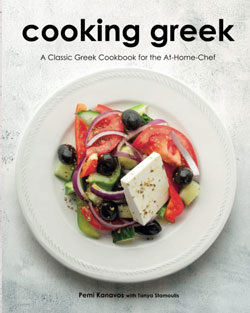GreekGirlCooks
Member
In the United States, food is readily available year round because the produce often comes from all over.
Avgolemono Soup
Avgolemono soup is a creamy and comforting dish that’s perfect for a cold day. It’s made with chicken broth, rice, and a mix of eggs and lemon juice, which creates a creamy texture. It's my favorite year round but I love it in the winter!
Moussaka
Moussaka is one of the most famous Greek dishes, and for good reason. It’s a layered casserole made with eggplant, ground beef or lamb, tomato sauce, and béchamel sauce. I tend to make this on special occasions and because it needs the oven, it's more like a winter thing for me.
Fasolada
Fasolada is a simple and hearty soup made with white beans, vegetables, and herbs. It’s a staple in Greek households during the winter months, and it’s often served as a main dish. I make this a lot in the winter.
Kleftiko
Kleftiko is a delicious and tender meat dish that’s slow-cooked in parchment paper. It’s usually made with lamb, but can also be made with beef or pork. I have a family member who makes this at Christmas and I look forward to it.
What winter dishes do you like?
Avgolemono Soup
Avgolemono soup is a creamy and comforting dish that’s perfect for a cold day. It’s made with chicken broth, rice, and a mix of eggs and lemon juice, which creates a creamy texture. It's my favorite year round but I love it in the winter!
Moussaka
Moussaka is one of the most famous Greek dishes, and for good reason. It’s a layered casserole made with eggplant, ground beef or lamb, tomato sauce, and béchamel sauce. I tend to make this on special occasions and because it needs the oven, it's more like a winter thing for me.
Fasolada
Fasolada is a simple and hearty soup made with white beans, vegetables, and herbs. It’s a staple in Greek households during the winter months, and it’s often served as a main dish. I make this a lot in the winter.
Kleftiko
Kleftiko is a delicious and tender meat dish that’s slow-cooked in parchment paper. It’s usually made with lamb, but can also be made with beef or pork. I have a family member who makes this at Christmas and I look forward to it.
What winter dishes do you like?



